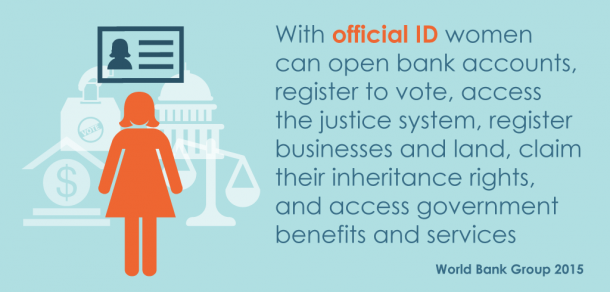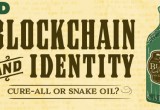Projects aim for legal identity for everyone
ID2020, ID4D aim to bring legal, binding, digital IDs to all world's citizens
09 May, 2016
category: Digital ID, Government
It was late June of 2014 when businessman John Edge was invited to a screening of a short film directed by actress Lucy Liu. “Meena” is about an 8-year-old girl sold to a brothel and forced into sex slavery for more than a decade. It’s based on a true story. “It’s horrific,” Edge says.
A panel of experts took questions afterward, including Susan Bissell, chief of child protection at international humanitarian group UNICEF. “Susan articulated that one of the biggest problems in protecting children who are at risk of sexual violence is a lack of birth certificates or identity,” Edge says.
The film got his attention. He saw the identity issue as a technology problem and was immediately moved to put his background in business and financial services to work.
He went home and sketched out a plan, offering details to Liu the next day over lunch. “I’d recently sold my company, and I was looking for a purpose,” Edge says. “So, ID2020 was started on the 27th of June, 2014 – the day after I saw ‘Meena.’”
ID2020 seeks to create a system by the year 2020 that would be technically and legally compliant for children regardless of nationality, origin or status. “The term often used is ‘the last child,’ and the last child is referred to as an orphaned 5-year-old girl from nowhere,” Edge says. “It’s really difficult to create a legal identity for somebody who’s not from somewhere. ID2020’s mission technically is around this thing called self-sovereign identity – being able to prove that you are you.”
The purpose of ID2020 is to nurture public-private partnerships that can create an opportunity for emerging technology to connect with organizations that are working toward U.N. Sustainable Development Goal 16.9 – legal identity for all. “Success on 16.9 will enable those persons that are invisible in society – and may become vulnerable – to have a legal identity,” Edge says. “Once a person has an identity, government and non-government organizations can help them become safe, part of society, financially included and economically active.”
The U.N. Sustainable Development Goals were set in September 2015 with a pledge that no one will be left behind. The agenda contains 17 goals, containing 169 targets, to be reached by 2030.
Edge has his sights set on just one target. “ID2020 will create a system that would create an identity for the last child that would be scalable to a billion, and that is difficult,” Edge says. “The team and I have spent the last year and a half working through the concept of what it would take to do an enterprise grade system, something that would work at enormous scale.”
ID2030, the subsequent step, involves scaling that ID2020 system and delivering it to more than a billion people.
As for what kind of ID will be used and how a stateless child’s identity will be proved, Edge says it’s too soon to know. “The first 18 months has been focused on regulation, compliance and policy. Technology is not the concern,” he says. “Everybody wants to know what the technology is, but they’re missing the point. There’s lots of technology out there but it’s how you compile it and how it fits in with regulation and compliance.”
“We have voice recognition, facial recognition, iris, multiple different technologies. How they’re combined in order to create a recognized legal identity is the key, and one of the interesting catch 22’s is that every single country has a different way of recognizing a legal identity,” he adds.
ID2020 is trying to create something that will lead to international collaboration. “If it’s going to scale to a billion – and there’s this thing called IoT going on – it’s probably a good idea to build out mobile,” Edge says. “It’s a cyber security problem, so we need to design this system with the end in mind. That is why I’m not saying it’s going to be an iris scan on an Android phone using this app. That is not how we’re going about it.”
Ultimately, the team is striving to meet the mission of the Sustainable Development Goals. “Technology providers around the world are welcome and encouraged to collaborate,” Edge says. “It is such a big challenge and if we are to achieve it, it will be done by a collective. So, ID2020’s purpose is to scale to a billion, and provide policy enabled identity that works for the last child by 2020.”
The World Bank’s identity initiative
The goals set by ID2020 are admirable and the task massive, but technology is only one part of a much larger puzzle. A stated goal of ID2020 is to bring emerging technologies together with government organizations, NGOs and other groups addressing this global challenge. One group ID2020 could assist is the World Bank’s Identification for Development (ID4D) initiative, which is working toward a similar goal.
The World Bank estimates 1.5 billion people — largely in Asia and Africa — are not carrying a document that recognizes their legal identity. Approximately half of those are children under the age of 14.
“In Sub-Saharan Africa, for example, more than a third of the population faces this challenge and more than 40% of births are left unregistered,” says Vyjayanti Desai with the World Bank Group (WBG), an international development agency.
Desai is the program manager for WBG’s ID4D initiative, launched about a year and a half ago to support progress toward identification systems using 21st century solutions. The goal is to get information to governments worldwide about best practices for delivering birth registrations and a legal identity to every person.
“Advances in technology including biometrics and data management provide an opportunity to leapfrog traditional, paper-based approaches,” Desai says. “The ubiquity of mobile connectivity also provides an unprecedented opportunity to deliver services faster and more efficiently than ever before, as well as reach remote and rural areas.”
Like ID2020, Sustainable Development Goals 16.9 also drives ID4D. The ID4D team has created a global dataset across 198 economies and an assessment tool to gauge a country’s existing identity landscape. Thirty countries have been assessed so far. Researchers are evaluating the legal constraints and opportunities for women to obtain an ID, as well as the role of identification in achieving financial access. The World Bank is helping countries transition to digital identification methods through technical assistance, financial support and expert guidance.
“We have begun a process to convene government officials, the private sector and development agencies to agree on a shared vision,” Desai says. “We are hoping that by bringing together multiple stakeholders across a single platform, we can define a shared set of principles.”
The World Bank has seen the impact of strong identification systems in developing countries like Bangladesh. Some 96 million residents there have been issued a smart, national ID card for delivery of government and private sector services. It turns out that linking such benefits to an ID card can lead to greater citizen enrollment in an ID database, but each country is doing it their own way. Morocco, for example, is moving to computerize its civil registry, while India has instituted a biometric identification system.
Desai says governments need a plan to reach remote communities, as well as aid clients at female-only enrollment centers where women and children are disproportionately impacted by a lack of documentation. She says governments need to work together on an integrated identification solution in lieu of the piecemeal systems currently in place that often include redundant and costly biometric enrollments.
Biometrics seems likely to play a key role going forward because individuals can be uniquely identified. “However, we need to understand the issues and needs at the national level to see what makes the most sense for that particular context,” Desai says. “Technology will continue to advance and continue to be more affordable, so we need to ensure that systems being designed now can adapt for all the potential new technologies in the future.”




